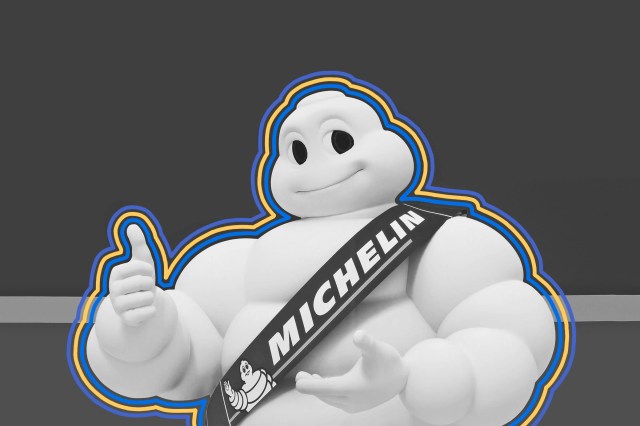
Wendy Thomas Beat Out Her Siblings for Burger Stardom
Melinda “Wendy” Thomas, the pigtailed, redheaded girl who graces the logo for burger chain Wendy’s, was a real person — the daughter of the chain’s founder, Dave Thomas. The illustration is based on a photograph taken at a Columbus, Ohio, photo studio in 1969, when she was just 8 years old.
It turns out that Wendy wasn’t the only kid up for the role. The Thomas family had four other children: her older sisters Pam, Lori, and Molly, and a brother, Kenny. Wendy, with her red hair and dusting of freckles, had, as she told People in 1990, the “all-American mug” her dad was looking for.
The elder Thomas, who died in 2002, eventually regretted naming his restaurant chain after his kid because, as a de facto spokesperson, she “lost some of her privacy.” Wendy did use her face to sell Wendy’s burgers — this time as an adult — one more time in 2011, promoting a burger named after her father.

The Real Duncan Hines Couldn’t Cook
Before he lent his name to baking mixes, Duncan Hines, born in Kentucky in 1880, was a traveling office supply salesman, a profession that didn’t allow much time for home cooking. Instead, Hines became a discerning patron of local restaurants, taking notes on food quality and even food safety. Car trips were becoming more a part of everyday life during his days on the road in the 1920s through the 1940s, so when he self-published a guidebook called Adventures in Good Eating in 1936, it was a big hit. He updated and re-released the guide each year until he retired in 1954.
His favored restaurants started displaying “Recommended by Duncan Hines” in their windows — kind of like Zagat today. After releasing a couple of popular sequels, Hines, then 72, teamed up with advertising exec Roy H. Park in 1949 to form Hines-Park Foods. The company merged with Proctor and Gamble in 1957.

Captain Morgan Was a 17th-Century Welsh Buccaneer
Buccaneers were a very specific kind of quasi-legal seafarer that sailed around the Caribbean agitating the Spanish empire, typically with financial backing from the English. Captain Morgan is perhaps the most famous of them all, and made a tidy fortune; he invested in sugar plantations and amassed a fleet of 36 ships. But in 1671, he made a crucial error when he attacked Spanish-held Panama City after England had signed a treaty with Spain. England made a show of arresting him, but when he got back to England he was knighted by King Charles II. He eventually returned to Jamaica, was appointed lieutenant governor, and lived the rest of his life in the Caribbean.
Morgan didn’t have any input on the spiced rum bearing his name, as far as anyone knows, but when the distillery Seagram’s purchased the recipe from a Jamaican pharmacy in 1944, he apparently seemed like a fitting mascot.
More Interesting Reads

“Boyardee” Is a Phonetic Spelling of “Boiardi”
Chef Boyardee was a real person, and he was famous before he lent his face to one of America’s most popular canned food brands. He started his career in his native Italy at age 11 and, after settling in Cleveland, Ohio, with his family in the late 1920s, opened an Italian restaurant. Customers loved the food so much that they asked how to make it at home, so he started selling pasta, sauce, and cheese, helping to bring Italian cooking into the mainstream in American households.
His company was originally called Chef Boiardi, but it was hard for many Americans of the day to pronounce, so he changed the brand’s name to Chef Boy-ar-Dee. The company is best known for premade canned meals today, but when the products first hit the grocery store, Chef Boy-ar-Dee was the largest American importer of Parmesan cheese. Boiardi sold his company to American Home Foods Company in 1946, but continued consulting and appearing in commercials until around 1979.

Ronald McDonald Was Played by a Famous Weatherman
When McDonald’s began in the 1940s, it was started by two real McDonalds: Maurice and Richard, a pair of brothers in San Bernardino, California. The company grew throughout the 1950s through franchising, meaning that business owners would operate McDonald’s locations under national brand guidelines.
One branch in Washington, D.C., owned by John Gibson and Oscar Goldstein, sponsored a local broadcast of the incredibly popular children’s show Bozo’s Circus, starring the red-haired Bozo the Clown. The character was one of the first national celebrities for children, and even before he hit the TV screen, he lent his face to books, records, and other kids’ products. In D.C., Bozo was played by longtime Today show weatherman Willard Scott.
The sponsorship was so profitable that after the series ended in 1963, the franchise hired Scott to create his own clown for advertisements: “the silliest and hamburger-eatingest clown, Ronald McDonald.” The original design featured a food tray for a hat and a styrofoam cup for a nose, a far cry from the Ronald McDonald character that would eventually become synonymous with the brand. The idea was a success, and other franchise owners started following suit with their own clowns.
Eventually, Goldstein pitched their clown idea to the parent company, but the latter was reluctant at first. It only agreed because of the D.C. branch’s sales numbers, and debuted Ronald McDonald nationally at the 1965 Macy’s Thanksgiving Day Parade. McDonald’s did, however, fire Scott for being too rotund the next year, hiring a new performer and redesigning the character into something closer to what we know today.

The Cracker Jack Boy (and His Dog) Were a Founder’s Family Members
The story of Cracker Jack started in the 1870s, when German immigrant Frederick W. Rueckheim and his younger brother Louis started selling bricks of popcorn out of a small office in Chicago. They began selling their caramel corn in the 1890s, and by the end of the century, their creation — and the innovative waxed box that kept its contents fresh — was a sensation. The brand was immortalized in the song “Take Me Out to the Ballgame” in 1908, cementing it as an American icon.
As World War I rolled around and anti-German sentiment started rising in America, Cracker Jack needed a show of patriotism to boost declining sales. The company redesigned the boxes in red, white, and blue colors, and for an extra wholesome touch, the elder Rueckheim added an illustration of his grandson, which first appeared in ads and then packages around 1918. Sadly, the boy died of pneumonia at age 8, so his image stayed on the box as a memorial.

A 14-Year-Old Boy Designed Mr. Peanut
The Planters Peanut Company was only a decade old when it held a contest in 1916 for the company’s trademark, with a $5 prize (about $150 today). Antonio Gentile, a boy in his early teens from Suffolk, Virginia — part of the same Italian immigrant community as Planters founder Amedeo Obici — drew an anthropomorphic peanut serving hot peanuts, exercising, and walking with a gentleman’s cane.
A graphic designer spruced up Mr. Peanut, giving him his trademark monocle and top hat, and in 1918, he appeared in a full-page ad in the Saturday Evening Post. It was the first national ad campaign for not just Planters, but any peanut brand. Mr. Peanut still graces Planters products and ad campaigns, sometimes with some trendy adjustments, like roller blades in the 1990s or, more recently, his death and resurrection as a little baby nut.

The Michelin Man Was Originally “the Road Drunkard”
The Michelin Man is pretty cuddly-looking for a stack of tires, but at the turn of the 20th century, he was a little scarier, or at least more of a lush. In fact, he was originally born from a design created for a brewery. When the poster artist hired by Michelin showed co-founder Andre Michelin a rejected brewery poster design of a burly human man raising a beer mug, the co-founder wondered what he would look like if he were made of tires. The final ad was a man-shaped stack of tires with human hands and pince-nez spectacles holding a champagne glass full of road debris as if in toast, as a couple of other tire-men looked on. It read “nunc est bibendum,” a Latin quote meaning “now it is time to drink,” and, in French, “the Michelin tire drinks up obstacles.” The company called the man “Bibendum,” and after this poster, people started calling him “the road drunkard.”
It would be a while before the tire took on the role of a friendly helper. Until the 1920s, he kept his glass and accessories, and often smoked a cigar; back when only the wealthy could afford cars, this helped him reach the company’s target audience. Today, he’s a more wholesome character.












